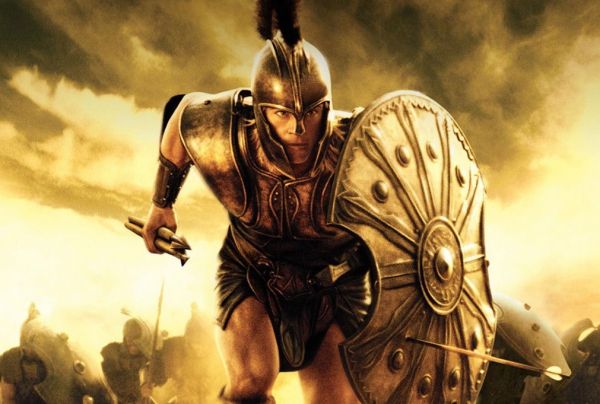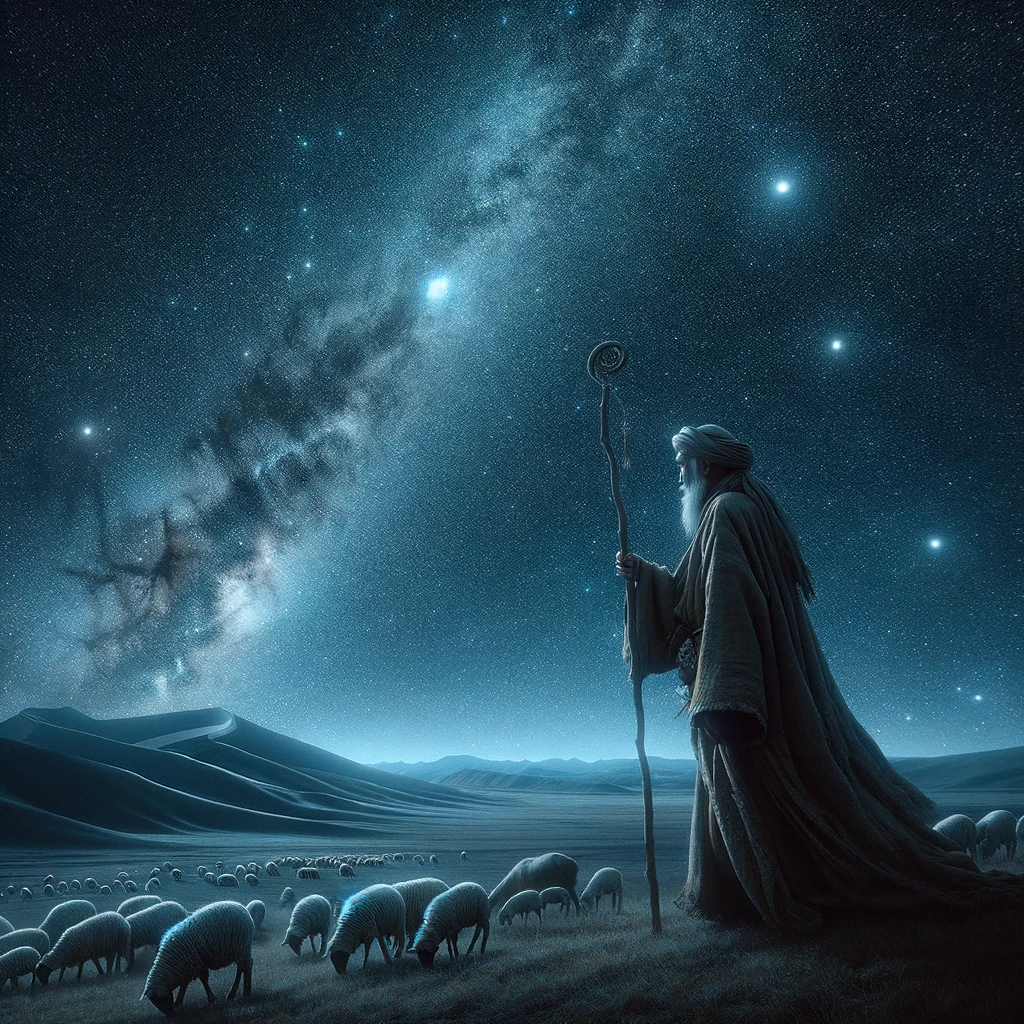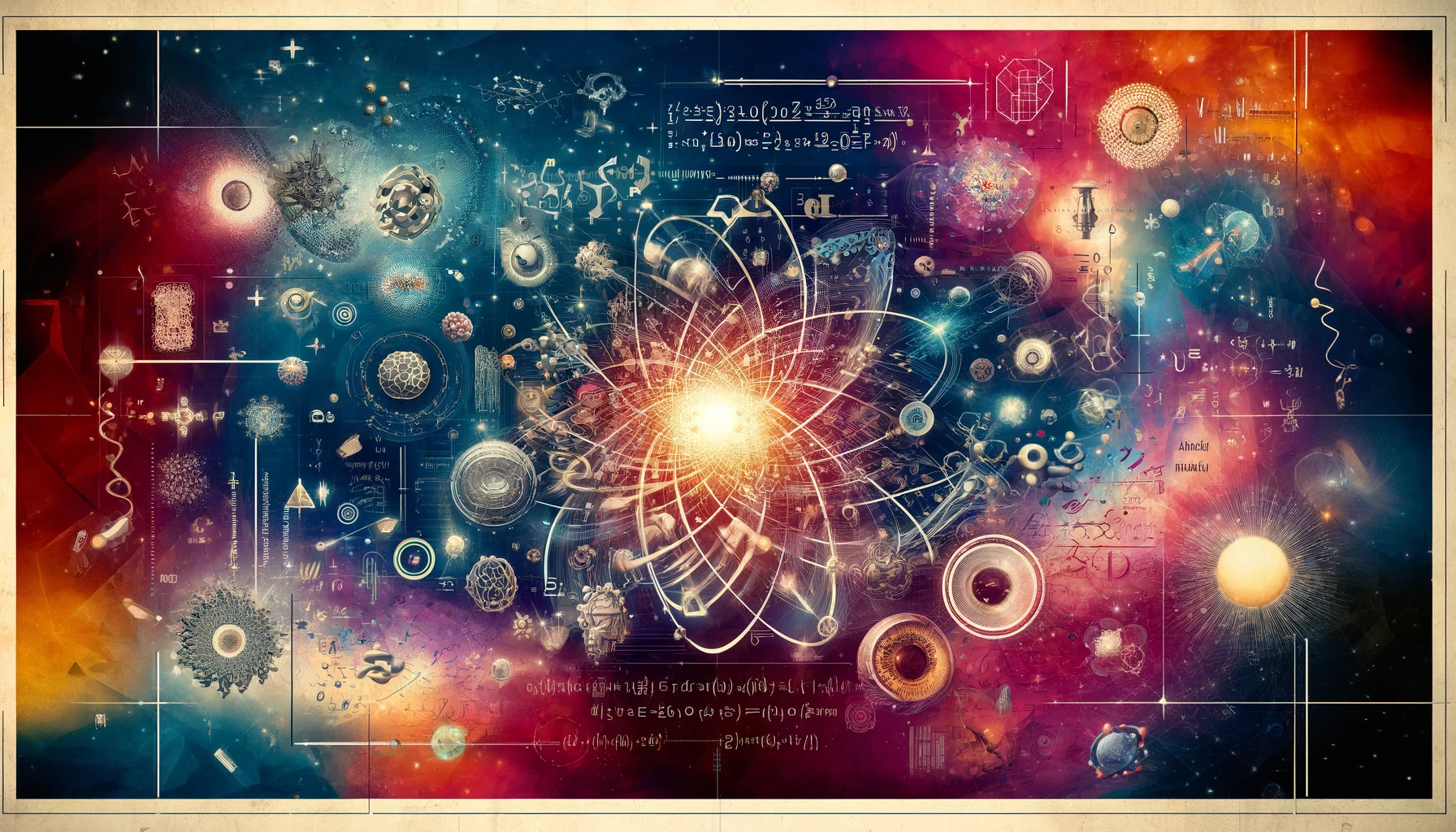In general terms, Romanticism can be seen as a creative period in which, owing to the radical changes taking place in the historical and social spheres, the cultural view of the world too had to be reconstructed or totally readjusted.
The term Romanticism derives from the French word Romance which referred to a vernacular languages derived from the Latin and to the works written in those languages.
The word Romantic appeared for the first time in England towards the middle of the 17th century when it was used critically to describe the fantastic and unrealistic style of chivalry romances. The word was adopted in France by Rousseau in the 18th century to express the vague, almost inexpressible feeling one had when looking at certain landscapes. But it was the Germans who
towards the end of 18th century first used the word in an entirely positive sense, extending it to denote a spiritual and aesthetic attitude. “Romantic” became synonymous with “poetic”; a simple word came to stand for a whole movement of writers, philosophers and composers who were rebelling against Classicism.
In the philosophical field idealism was opposed to sensationalism; 18th-century cosmopolitism and universalism gave way to democratic principles, to the ideals of freedom of oppressed peoples, to national consciousness; the enlightening function of history was re-evaluated.
In the literary field Sensucht (eternal restlessness) was opposed to Stille (the profound quietness of the soul); poetry was always new and spontaneous, no longer the imitation of the classics. In Germany the notion of Sturm und Drag was to be a component of the work of a whole range of artists, from Goethe to the painter Caspar David Friedrich to the composers Beethoven, Schubert and Schumann; in France Romanticism found a great proselyte in Mme De Stael but did not become a movement until much later. In England Romanticism found its greatest expression among a small circle of poets and in the Gothic novel.
Romantic Poetry
The easiest way to understand the profound revolution in thinking which the Romantics represented is to compare the characteristics of their poetry to those of the neoclassical or Augustan poets who came before them:
AUGUSTAN
- Importance of reason and order.
- Control of emotion and imagination. Rational thinking and argumentation.
- Children must be disciplined and civilized to conform with the dictates ofsociety.
- Society placed before the individual. Poetry seen as the aesthetic expression of social order.
- Sophisticated, “artificial” language. Emphasis on formal perfection.
- Classical themes and allusions.
ROMANTIC
- mportance of feelings and intuition.
- Free play of imagination. Poetic “vision”.
- Children are sacred, being the closest creatures to God and thus to the source of creation. Adults learn from their childhood experience.
- More consideration given to the poet’s inner life. Poetry seen as the expression of the soul and celebration of the freedom of nature and individual experience.
- Language more typical of common usage.
- Heightened observation of nature and everyday situations.
Romantic poetry appeals to the emotional, intellectual and sensuous spheres of reader’s experience. To convey his perception of reality, the poet often uses the language of sense impressions generating visual, auditory, tactile and olfactory images. Blake and Wordsworth particularly exploited the sensibility of the eye and ear; sight, touch and smell awoke Keats’s imagination to a sphere of being in which he perceived and apprehended vast issues. A peculiar figure of speech in which an image perceived through one of the five senses is associated with
another image involving a different sense is called synaesthesia. The sensuous language of Romantics later influenced the exponents of Aestheticism and decadent writers like Oscar Wilde.
The great English Romantic poets are usually grouped into two generations: The First Generation included Blake, Coleridge and Wordsworth and was characterized by the attempt to theorize about poetry;
The poets of the Second Generation, reflected in their poetry the clash between ideal and real, because of the political disillusionment they experienced.
Poetry was no longer regarded as an imitation of life, a mirror of reality, but coincided with the desire to challenge the cosmos, nature, political and social order.
Three attitudes of the greatest poets:
1. The anti-conformist, rebellious and cynical attitude of the “Byronic Hero”;
2. The revolutionary spirit and stubborn hope of Shelley’s “Prometheus”;
3. Keats escape into the world of classical beauty.
The Novel in the Romantic Age
All the changes that British society and the economy underwent during this period also had their effect on the development of the novel. The linear history of one or more characters became the preferred form, but at the same time novelists began to reflect a wider range of themes, issues and settings. Novel began to encompass contrasting ideas, settings and points of view such as present/past, male/female, urban/rural. The two most important British novelists of the early
part of the century, Walter Scott and Jane Austen, were almost polar opposites but reflected in different ways the climate of their times. Walter Scott wrote mainly historical novels. His novels were all set in the past and concerned with rebellions, revolutions and social transformations which occurred in Britain’s history throughout the centuries; in his novels he draws parallels between this
historical setting and his own time. Scott was the first novelist to break the boundaries between history and fiction. Jane Austen concerned with the psychological and social contours of the provincial English society in which she lived and, in particular, the fate of women within that society. Austen’s novels in a sense deliberately turn away from the impersonal forces of history to focus on the lives of small communities.
Gothic Novel
Gothic novels originally dealt with the macabre, fantastic and supernatural and they were usually set in haunted castles, savage landscapes and amongst ruins. The word Gothic originally implied Medieval but later on the emphasis switched to the macabre. These Gothic romances, which were criticized by “serious” novelists like Jane Austen for their extravagant language and over-complicated plots, became in the 19th century the inspiration for a subversive kind of literature whose influence continues to be felt in the novel today, particularly in what is known as genre of popular fiction (science fiction, horror, detective story, etc). Mary Shelley’s gothic tale Frankenstein is particularly significant in this regard.
Later on after the Romantic period, through such works as Bram Stoker’s Dracula (1897) and Robert Louis Stevenson’s The Strange Case of Dr. Jekyll and Mr. Hyde (1886) , Gothic fiction continued to represent a critique of the rational order of the Victorian society, particularly of its climate of sexual
repression. Moreover, Gothic fiction was a considerable influence on major Victorian writers such as Dickens and the Bronte sisters.
Traduzione
IL PERIODO DEL ROMANTICISMO
In termini generali, il Romanticismo può esser visto come un periodo creativo in cui, a causa dei cambiamenti radicali che ebbero luogo nelle sfere storiche e sociali, anche la visione culturale del mondo ha bisogno di essere ricostruita o totalmente aggiustata.
Il termine Romanticismo deriva dalla parola francese Romance che si riferiva alle lingue dialettali derivate dal Latino e dai lavori scritti in quelle lingue. La parola Romantico apparve per la prima volta in Inghilterra intorno alla metà del XVII secolo quando essenzialmente veniva utilizzata per descrivere lo stile fantastico ed irrealistico dei romanzi cavallereschi. La parola fu adottata in
Francia da Rousseau nel XVIII secolo per esprimere la vaga, quasi inesprimibile sensazione che si prova nel guardare certi paesaggi. Furono però i Tedeschi verso la fine del XVIII secolo ad utilizzare per primi la parola in senso interamente positivo, estendendolo all’indicare un atteggiamento spirituale ed estetico. “Romantico” divenne sinonimo di “Poetico”; una semplice parola divenne simbolo per un intero movimento di scrittori, filosofi e composito che si ribellavano al Classicismo.
In campo filosofico l’idealismo si opponeva al sensazionalismo; il cosmopolitismodel XVIII secolo e l’universalismo aprivano la strada ai principi democratici, alle idee di libertà delle popolazioni oppresse, alla consapevolezza nazionale; venne rivalutata l’illuminante funzione della storia.
In campo letterario Sensucht (eterna agitazione) si opponeva a Stille (profonda calma dell’anima); la poesia era sempre nuova e spontanea, non più imitazione dei classici. In Germania le nozioni di Sturm und Drag erano componenti delle opere di un’intera gamma di artisti, da Goethe al pittore Caspar David Friedrich ai compositori Beethoven, Schubert e Schumann; in Francia trovò seguito in
Madame De Stael ma non divenne un movimento se non molto più avanti. In Inghilterra il Romanticismo trova la sua maggiore espressione fra i poeti di un piccolo circolo e nel romanzo.
Poesia Romantica
La maniera più semplice per comprendere la profonda rivoluzione di pensiero che rappresentò il Romanticismo è quella di comparare le caratteristiche della sua poesia con quelle dei poeti neoclassici o Augustei che vennero prima di loro:
AUGUSTEI
- Importanza dell’ordine e della ragione.
- Controllo delle emozioni e dell’immaginazione. Pensiero ed argomentazioni razionali.
- I bambini devono essere disciplinati e civilizzati conformemente ai dettami della società.
- La società viene prima dell’individuo. Poesia vista come estetica espressione dell’ordine sociale.
- Linguaggio sofisticato, “artificiale”. Enfasi della perfezione formale.
- Allusioni e temi classici.
ROMANTICI
- Importanza di sensazioni ed intuizione.
- Libera espressione dell’immaginazione. “Visione” poetica.
- I bambini sono sacri, essendo le creature più vicine a Dio e quindi alla fonte di creazione. Gli adulti imparano dalla loro esperienza infantile.
- Maggiori considerazioni riguardo la vita intima dei poeti. Poesia vista come espressione dell’anima e celebrazione della libertà della natura e dell’esperienza dell’individuo.
- Linguaggio molto tipico della lingua d’uso comune.
- Maggiore osservazione della natura e delle situazioni quotidiane.
La poesia Romantica si appella alle sfere emozionali, emotive ed intellettuali dell’esperienza del lettore. Per conferire la loro percezione della realtà, il poeta spesso utilizza il linguaggio delle impressioni dei sensi generando immagini visive, uditive, tattili ed olfattive. Blake e Wordsworth in particolare sfruttarono la sensibilità dell’occhio e dell’orecchio; vista, tatto ed olfatto svegliavano
l’immaginazione di Keats verso una sfera dell’essere in cui percepiva ed apprendeva varie questioni. Una figura retorica peculiare in cui un’immagine percepita attraverso uno dei cinque sensi viene associata ad un’altra immagine che coinvolge un altro senso si chiama sinestesia. Il linguaggio dei sensi dei Romantici influenzerà più tardi esponenti dell’Estetismo e scrittori decadenti
come Oscar Wilde.
I grandi poeti del Romanticismo Inglese vengono generalmente raggruppati in due
generazioni:
La Prima Generazione includeva Blake, Coleridge e Wordsworth ed era caratterizzata dl tentativo di teorizzazione della poesia.
I poeti della Seconda Generazione riflettevano nella loro poesia il conflitto tra
ideale e reale, a causa della disillusione politica sperimentata.
La poesia non veniva più vista come imitazione della realtà, come specchio della
realtà, ma coincideva col desiderio di sfidare il cosmo, la natura, l’ordine politico e
sociale.
Tre atteggiamenti dei più grandi poeti:
1. L’atteggiamento anticonformista, ribelle e cinico de “ L’eroe Byroniano”;
2. Lo spirito rivoluzionario e la tenace speranza del “ Prometeo” di Shelley;
3. La fuga di Keats nel mondo della bellezza classica.
Il Romanzo in Età Romantica
Tutti i cambiamenti a cui la società Britannica e l’economia furono sottoposte durante questo periodo ebbero i loro effetti anche sullo sviluppo del romanzo. La storia lineare di uno o più personaggi divenne la forma preferenziale, ma al tempo stesso i romanzieri cominciarono a trattare diverse tipologie di tematiche, questioni e contesti. Il romanzo cominciò a comprendere idee contrastanti,
scenari e punti di vista come presente/passato, maschile/femminile, urbano/rurale. I due più importanti romanzieri della prima parte del secolo, Walter Scott e Jane Austen, erano quasi poli opposti ma riflettevano in maniera diversa il clima dei loro tempi. Walter Scott scriveva principalmente romanzi storici. I suoi romanzi erano tutti ambientati nel passato e riguardavano
ribellioni, rivoluzioni e trasformazioni sociali che si susseguirono nella storia Britannica nel corso dei secoli; nei suoi romanzi egli traccia delle linee parallele tra il suo contesto storico ed il suo stesso tempo. Scott fu il primo romanziere a rompere i confini tra storia e finzione. Jane Austen si occupava del contesto psicologico e sociale della società della provincia Inglese in cui viveva e, in
particolare, del destino delle donne all’interno di tale società. I romanzi della Austen in un certo senso si tirano fuori deliberatamente dalle forze impersonali della storia per focalizzarsi sulle vite delle piccole comunità.
Il Romanzo Gotico
I romanzi gotici trattavano il macabro, il fantastico ed il soprannaturale ed erano generalmente ambientati in castelli infestati, paesaggi selvaggi e tra rovine. La parola Gotico originariamente implicava Medievale ma più tardi un’enfasi concentrata sul macabro. Questi romanzi gotici, criticati dai romanzieri ”seri” come Jane Austen per il loro linguaggio stravagante e le trame iper-complicate,
divennero nel XIX secolo ispirazione per un tipo di letteratura sovversivo la cui influenza continua ad essere percepita nei romanzi di oggi, in particolare in ciò che conosciamo come genere di finzione popolare ( finzione scientifica, horror, storie investigative, etc). Il racconto gotico di Mary Shelley, Frankenstein, è particolarmente significativo in tal senso.
Più avanti nel periodo romantico, attraverso opere del calibro di Dracula (1897) di Bram Stoker e Lo Strano caso di Dr. Jekyll e Mr. Hyde (1886) di Robert Louis Stevenson, il gotico continuò a rappresentare una critica all’ordine razionale della società Vittoriana, in particolare del suo clima di repressione sessuale. Inoltre, la finzione gotica ebbe una considerevole influenza su alcuni dei maggiori scrittori Vittoriani come Dickens e le Sorelle Bronte.
- Tesine



